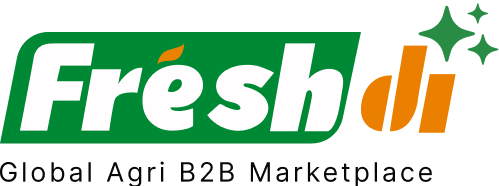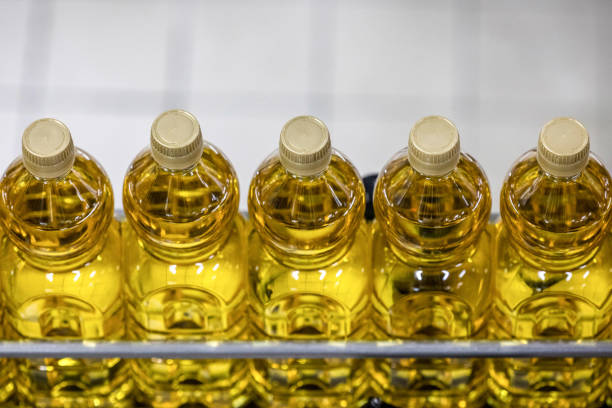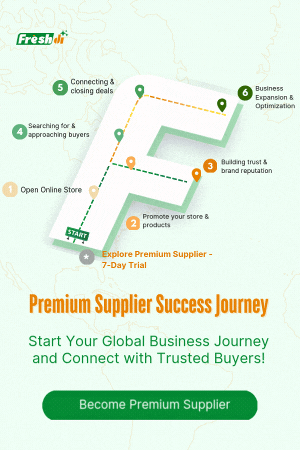Introduction – Current State of Play: The Edible Oils Sector in Italy
Welcome to the latest and most important update on the Edible Oils market in Italy for 2025. If you’re sourcing olive oil, sunflower oil, or other vegetable oils, there’s no better time to pay attention. The Italian edible oils industry is undergoing massive shifts—some driven by nature, others by human strategy. From climate-induced production drops to bold government support plans, the landscape is changing quickly.
For businesses, adaptability is no longer optional—it’s survival. Whether you’re a food manufacturer, wholesaler, or specialty retailer, staying ahead of these changes is vital. Platforms like Freshdi are becoming essential tools for tapping into real-time supplier performance, RFQ trends, and market insights that help navigate such volatility.
Let’s take a deep dive into what’s really going on.
Deep Dive – What’s Making Headlines? Key Recent News & Impacts
Lower Olive Oil Yields Due to Harsh Weather
In the 2024/25 season, Italy’s olive oil production dropped by a staggering 25%. The total output was just 248,000 metric tons, far below the historical average. Why? Blame it on intense droughts, heatwaves, and the spread of Xylella fastidiosa, a destructive pathogen that’s been ravaging olive trees in southern regions like Puglia, Calabria, and Sicily.
This isn’t a one-off. Over the past decade, Italy hasn’t crossed the 260,000-ton mark, which is a sharp fall from the 600,000-ton highs seen 20 years ago.
Consumer Behavior: Price vs. Purity
Interestingly, even with lower production, retail sales of olive oil in Italy rose by 24% (as of May 2025). But here’s the catch—sales of 100% Italian extra virgin olive oil dropped by 25%.
That tells us that while Italians care about quality and sustainability, they’re also watching their wallets. Affordability is winning over origin purity, especially in the domestic market.
Record-Breaking Exports Amid Domestic Deficits
Italy may be producing less, but it’s exporting smart. The export value hit €3.08 billion, with the United States, Germany, and Spain being top destinations. However, it’s not all rosy—Italy still imports more than it produces, revealing a structural trade deficit.
Government Steps In: The National Olive Plan
In April 2025, the Italian government launched a National Olive Plan. Here’s what it brings to the table:
- Upgraded Oil Mills with digital tools and waste-reducing tech.
- Traceability and Anti-Counterfeit Measures to protect PDO/PGI supply chains.
- Training Programs for young agripreneurs.
- Sustainability Funding for organic farming and better soil health.
Private Sector: Salov Leads on Sustainability
In 2023, Salov stepped up with big investments in modernizing facilities, boosting storage capacity, and using 100% recycled packaging. Their efforts align with broader market goals: efficiency, traceability, and eco-impact reduction.
Market Growth Projections: A Promising Future
The Italian vegetable oil market is projected to hit USD 11.19 billion by 2033, with a healthy CAGR of 5.66% from 2025 to 2033. The growth hinges on Italy’s culinary traditions, premium branding, and expanding global demand for authentic olive oil.
Top 3 Verified Edible Oils Suppliers in Italy – Navigating Current Market Realities
When production is down and demand is up, choosing the right supplier becomes a game changer. Based on data from the Freshdi platform—which analyzes verified supplier performance, certifications, and trade data—here are the Top 3 Edible Oils Suppliers in Italy for 2025:
1. VILLAPANA S P A
- Known for: High-quality extra virgin olive oils and blended vegetable oils.
- Why they stand out: Strong export track record, robust logistics, and consistent product quality.
- Freshdi Insight: Frequently ranked in Freshdi’s “Suppliers of the Month” due to high RFQ responsiveness and positive buyer reviews.
2. COSTA D`ORO S P A
- Known for: 100% Italian extra virgin and organic olive oils.
- Why they stand out: Global presence, certified sustainable practices, and advanced bottling technology.
- Freshdi Insight: Strong engagement in sustainability-focused RFQs and a top performer in export volume to the U.S. market.
3. MONINI S.p.A.
- Known for: Premium extra virgin olive oils and flavored oils.
- Why they stand out: Heritage brand with a modern edge—investing in traceability and eco-labeling.
- Freshdi Insight: Frequently flagged as a preferred partner for buyers seeking PDO/PGI-certified products.
Dynamic Ranking Note: Rankings on platforms like Freshdi are updated regularly based on supplier activities, reviews, and RFQ data. Check back often for real-time insights into “Suppliers of the Month” or “Top Exporters by Region.”
Market Navigation – Strategic Responses to The Current Edible Oils Landscape in Italy
So, what should businesses do in light of all this?
Reassess Your Sourcing Strategy
With production down and local prices rising, now’s the time to:
- Diversify suppliers to reduce regional risk—particularly away from drought-hit southern regions.
- Explore blends and alternatives like sunflower or rapeseed oils when olive prices spike.
- Use platforms like Freshdi to track supplier responsiveness, stock availability, and RFQ trends in real-time.
Prioritize Traceability and Certifications
As counterfeits increase, especially with high demand and low supply, sourcing from PDO/PGI-certified suppliers is more critical than ever. Look for:
- Digital traceability systems
- Sustainability certifications
- Freshdi-verified supplier status
Short-Term Outlook by Region
- North-Central Italy (e.g., Umbria, Tuscany): More stable production, better logistics, ideal for long-term contracts.
- Southern Italy (e.g., Puglia, Calabria): High quality but volatile production—consider spot buying or short-term deals.
Conclusion – Key Takeaways for Businesses in a Dynamic Market
The edible oils market in Italy is in flux—but not without direction. Here’s what you need to remember:
- Production is down, but exports are thriving—meaning the competition for quality suppliers is fierce.
- Consumer behavior is shifting, with affordability edging out purity in some markets.
- The Italian government and private sector are stepping up with bold investments in modernization and sustainability.
- Choosing the right supplier is more vital than ever, and platforms like Freshdi can guide your decisions with real-time data, verified supplier profiles, and RFQ alerts.
Business leaders and procurement teams must act fast, stay informed, and leverage technology to keep pace with this fast-evolving market.
Key Takeaways
- Italy’s olive oil production down 25% in 2024/25 due to climate and disease.
- Government launched National Olive Plan to modernize the sector.
- Export value hit €3.08 billion, but domestic supply still strained.
- Top suppliers like VILLAPANA, Costa D’Oro, and Monini are leading amid the chaos.
- Platforms like Freshdi help buyers make smart, timely sourcing decisions.
Checklist for Buyers: Edible Oils Sourcing in Italy (2025)
✅ Check supplier certifications (PDO, PGI, Organic)
✅ Monitor real-time RFQ trends on Freshdi
✅ Prioritize suppliers with sustainability and traceability systems
✅ Diversify supplier regions to reduce climate-related risks
✅ Lock in contracts where possible to mitigate price volatility
Future Outlook: What’s Next for Italy’s Edible Oils Market?
Looking ahead, we expect:
- Continued investment in sustainability and digital traceability
- Greater emphasis on blended oils and non-olive alternatives
- Expansion in exports to Asia and North America
- Rising demand for functional oils (e.g., infused, high-polyphenol varieties)
- Enhanced supplier-buyer transparency through platforms like Freshdi
How Freshdi Empowers Buyers in 2025
Freshdi isn’t just a B2B platform—it’s your sourcing command center. Whether you’re comparing suppliers, reviewing market trends, or responding to major RFQ shifts, Freshdi delivers:
- Verified supplier profiles
- Real-time market alerts
- RFQ management tools
- Export performance data
- Sustainability filters and certifications
Ready to make confident decisions in Italy’s edible oils market? Let Freshdi be your competitive edge.
References
- oliveoiltimes.com
- areastudimediobanca.com
- olivonews.it
- salov.com
- imarcgroup.com
FAQs
1. Why has olive oil production in Italy dropped so significantly in 2025?
Due to extreme droughts, heatwaves, and the spread of harmful pathogens like Xylella fastidiosa, especially in southern regions.
2. How can I ensure I’m buying authentic Italian olive oil?
Look for PDO or PGI labels and verified suppliers on platforms like Freshdi, where traceability is a priority.
3. Are prices expected to rise further in the coming months?
Yes, with supply limited and international demand strong, prices are likely to remain high or even increase.
4. What are the best regions in Italy to source from right now?
Central and northern regions like Tuscany and Umbria have more stable outputs and better infrastructure.
5. How does Freshdi help with supplier selection?
Freshdi offers real-time supplier ratings, export histories, RFQ insights, and certification filters to help you choose the best fit quickly and confidently.


